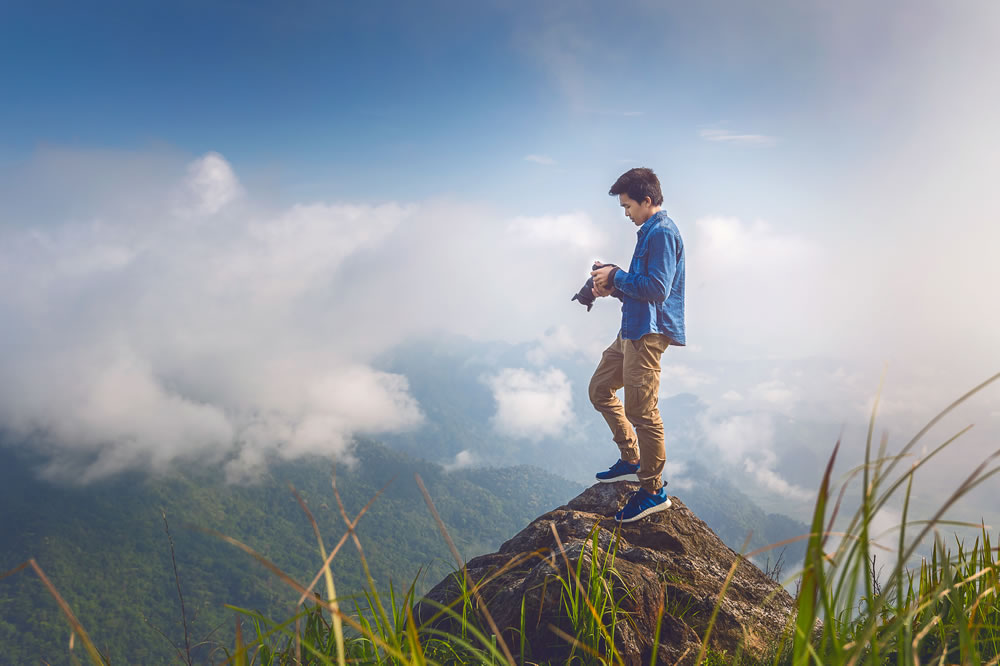We live in times when the environment is being harmed. Global warming is only one of the factors that have affected the environment. It is our duty toward our future generations to conserve resources and protect the environment. Whatever is the work that you do, you need to be conscious of how your work affects the environment.
This is true even for the photography profession. If you are a photographer, you owe it to the planet to be environmentally conscious. If you were wondering how you can be an eco-friendly photographer, then go through this guide.
You will find tips that will help you be environmentally friendly in your work. Follow these tips and practice sustainability in your daily work.

10 tips to be an environmentally conscious photographer
1) If possible, avoid new products
If you want to follow sustainable practices, avoid buying too many new products. Use the old photography gear you have for as long as you can. Instead of buying new equipment, consider getting used gear from a friend or known source.
When you buy any product, focus on quality. Buying quality cameras, lenses, and other accessories ensures that you don’t have to replace products frequently.
2) Donate your old gear
When your gear becomes old, and you find the need to replace them, don’t throw them away. Donate them to someone who needs such gear. There are many learners who would love to have equipment used by professionals, even if old. Find such people (you can search online) and give away old gear. Don’t throw them in the trashcan.
3) Save power
The biggest way you can be eco-friendly is to reduce your power use. Every time you keep your equipment powered on, you are consuming battery power. You then need to recharge the battery for which you will consume power. A worse option is when you don’t use rechargeable batteries and instead buy new batteries each time.
Reduce power consumption by switching off your devices when not being used. Don’t have the device in the charger after it has been charged. Switch off the mains to conserve power. This is the best way you can show your commitment to the environment.
4) Don’t mess with nature
There are some photographers who try to mess with nature to get the best shot. They pull down branches and leaves that are obstructing their view. Some photographers may even go to the extent of cutting down a tree to get a good shot.
Don’t mess with nature to take photographs. Let your nature photographs be natural. Look for another vantage point if something is blocking your view. Don’t harm plants or animals for your shooting.
Another mistake photographers do is mess up the environment by throwing bottles, plastic, and other things in the place where they shoot. This is the biggest disservice you can do to the environment. Avoid dirtying places and clean up once you are done shooting. This is the least you can do for the environment.
5) Use Eco-friendly Products
When you buy any product or accessory needed for your photography, look for eco-friendly products. In particular, when you print photographs look for eco-friendly photo papers. These papers are made from materials like bamboo, cotton, agave, or hemp. They are eco-friendly materials.
Photo printers can use vegetable inks for printing, which are eco-friendly. Other products like camera bags and backpacks can also be sustainable ones. Look for such products before you buy. Buying such products show your commitment to the environment.
6) Always follow rules
When you take outdoor photographs, you must understand the rules and follow them. This is especially true for nature photography taken in forests and reserves. These places have rules enforced by authorities to protect flora and fauna.
It is very important to follow rules. This is the minimum you can do to protect the environment. Sometimes, some rules may look silly or meaningless. But when the rule has been made, it is your duty to follow it. Breaking rules can harm the environment, especially outdoors.
7) Avoid printing photos
Today, most photography is digital in nature. The output is also digital and shared online or distributed online. In such a case, there is no need to print photos. Many photographs print copies of everything they shoot. This is not really necessary.
Every time you print a photograph, you are impacting the planet. So, avoid taking prints of photos and use the online mode. Print only when necessary and use eco-friendly printing products.
8) Use an eco-friendly product for developing films
Most photography is digital. But there are some photographers who prefer taking black and white photographs on film. These photos create a vintage look, which is why they are preferred. Developing the film would lead to the use of chemicals. These are not eco-friendly in nature.
You can consider using caffenol, which is a solution made from coffee with baking soda, water, and vitamin C. You can make this at home and use it to develop films. It is an eco-friendly way of developing films.
9) Be local
When you are traveling for photography, try to be local. Minimize or if possible, avoid air travel. Where possible, use public transport or carpooling to travel. Think local, so you can do your bit for the environment. You can consider teaming up with sustainable vendors in your areas for your photography.
Avoid unnecessary travel. Many meetings can be done online. When you travel, prefer staying with locals rather than staying in hotels. Another tip is to stay at a hotel that is a part of the Rainforest Alliance. Look for every single opportunity to be local and avoid impacting the environment.
10) Encourage others to follow you
Once you set on the journey to be an eco-friendly photographer, encourage others to join you. Share your experiences and your success stories with others. Write blogs and share sustainability tips with other photographers. You can even consider teaming up with other photographers and working to promote sustainability and eco-friendly practices.
